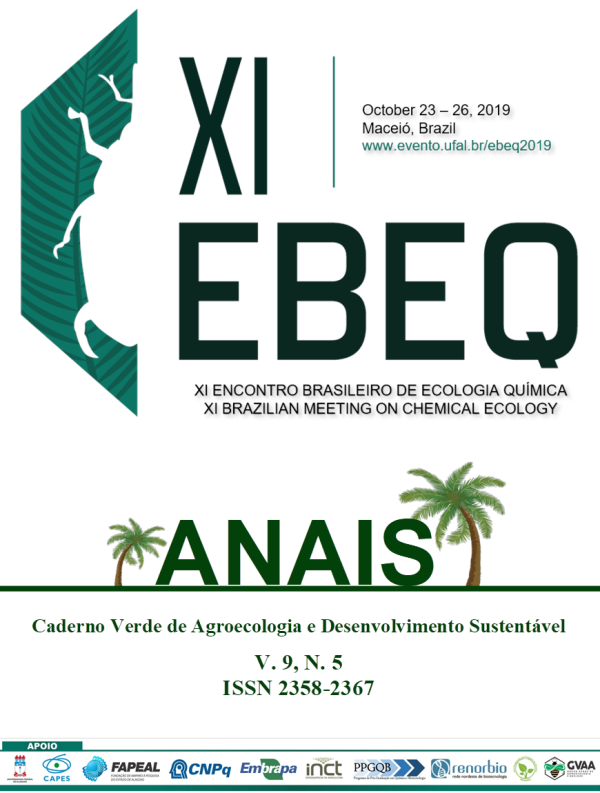INTEGRATED USE OF BOTANICAL EXTRACTS AND NATURAL ENEMIES IN THE MANAGEMENT OF INSECTS-PEST
Palavras-chave:
INTEGRATED PEST MANAGEMENT, BIOLOGICAL CONTROL, BOTANICAL EXTRACTS, AGRICULTURAL ENTOMOLOGYResumo
The species Bemisia tabaci (Hemiptera: Aleyrodidae) and Spodoptera frugiperda (Lepidoptera: Noctuidae) are important pests in agriculture around the world. They are problems for large crops, such as maize (Zea mays: Poaceae) and soybean (Glycine max: Fabaceae) and for horticultural crops, generally produced in smaller areas, such as tomato (Solanum lycopersicum: Solanaceae) and sweetpepper (Capsicum annuum: Solanaceae). As a way to reduce the effects of the attack of these insects, different tactics must be implemented in the context of Integrated Pest Management. Among these tactics are chemical control, using synthetic insecticides or natural products and biological control, with the use of natural enemies such as parasitoids and predators. In this context, the research group (AGRIMIP) has developed several studies aiming to evaluate the effect of botanical extracts and essential oils of plants of different taxonomic families on whiteflies and caterpillars, as well as to evaluate the selectivity of these compounds to Telenomus remus, T. podisi (Hymenoptera: Platygastridae) and Trichogramma pretiosum (Hymenoptera: Trichogrammatidae).Downloads
Publicado
Como Citar
Edição
Seção
Licença
Termo de cessão de direitos autorias
Esta é uma revista de acesso livre, em que, utiliza o termo de cessão seguindo a lei nº 9.610/1998, que altera, atualiza e consolida a legislação sobre direitos autorais no Brasil.
O(s) autor(es) doravante designado(s) CEDENTE, por meio desta, publica a OBRA no Caderno Verde de Agroecologia e Desenvolvimento Sustentável, representada pelo Grupo Verde de Agroecologia e Abelhas (GVAA), estabelecida na Rua Vicente Alves da Silva, 101, Bairro Petrópolis, Cidade de Pombal, Paraíba, Brasil. Caixa Postal 54 CEP 58840-000 doravante designada CESSIONÁRIA, nas condições descritas a seguir:
O CEDENTE declara que é (são) autor(es) e titular(es) da propriedade dos direitos autorais da OBRA submetida.
O CEDENTE declara que a OBRA não infringe direitos autorais e/ou outros direitos de propriedade de terceiros, que a divulgação de imagens (caso as mesmas existam) foi autorizada e que assume integral responsabilidade moral e/ou patrimonial, pelo seu conteúdo, perante terceiros.
O CEDENTE mantêm os direitos autorais e concedem à revista o direito de divulgação da OBRA, com o trabalho simultaneamente licenciado sob a Licença Creative Commons do tipo atribuição CC-BY.
O CEDENTE têm autorização para distribuição não-exclusiva da versão do trabalho publicada nesta revista.
O CEDENTE têm permissão e são estimulados a publicar e distribuir seu trabalho online (ex.: em repositórios institucionais ou na sua página pessoal) a qualquer ponto antes ou durante o processo editorial, já que isso pode gerar alterações produtivas, bem como aumentar o impacto e a citação do trabalho publicado.










